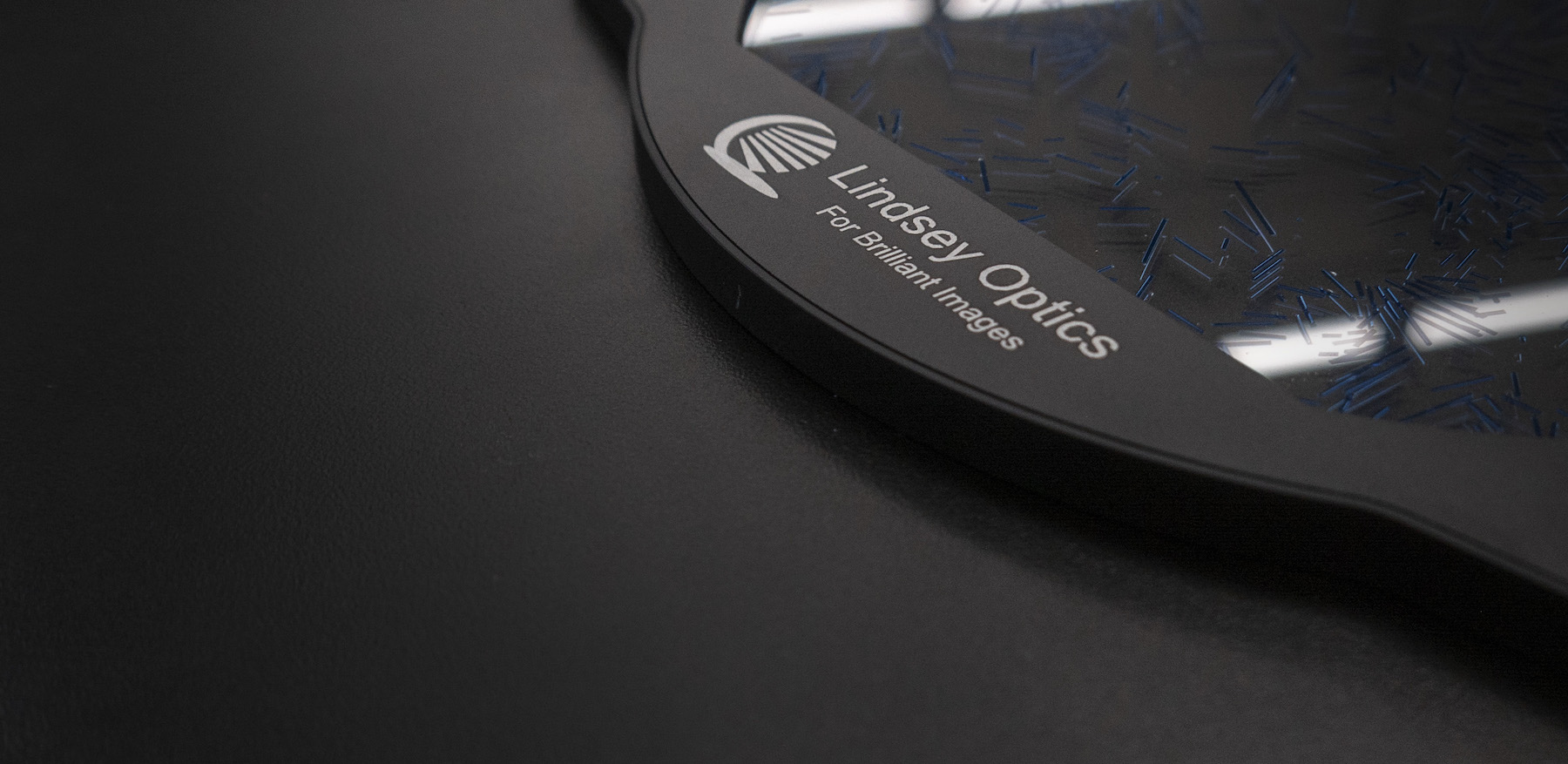
I recently got a look at the Lindsey Optics Brilliant² Rota-Streak Filters, designed to give your images those streaky anamorphic lens flares that have been a mainstay of big-budget feature films since the 1950s. Anamorphic lenses offer cinematographers a solution to get more out of each frame of film, optically compressing the image horizontally, allowing for an aspect ratio of 2:1 or more when the film is viewed with the corresponding projection lens. This allowed 35mm film to match and outperform the cropped widescreen images created with the heavier and more expensive 65mm and 70mm film cameras.
Due to design, anamorphic lenses have rather unique characteristics. With a shallower depth of field, wider angle of view for a given focal length and highlights that smear the light horizontally, it has become part of the creative visual look we have come to expect in feature films. Those horizontal light flares have become a desirable optical artifact, second only to a shallower depth of field. Yet true anamorphic lenses were hard to manufacture and even harder to maintain, making them too expensive for most productions, relegating their use mainly to big-budget features for years.
The Lindsey Optics Brilliant² Rota-Streak Filters filters give cinematographers an affordable option to mimic a variety of the characteristic flares found in those early anamorphic lenses. The filters are mounted with dual gears to allow the filters to be rotated within the frame creating a dynamically changing effect.
Starting with an optically clear base, Lindsey Optics offers the streaks in a variety of colors (pink, red, yellow, green, blue, red/white/blue combo and clear) as well as the number of streaks (linear filters are available w/ 2mm,3mm,4mm, 6mm lens separation), while streak variations include the Swirl, Confetti and a 4-point star filter to satisfy the differing challenges.
With the Rota-Streak filters, using the differing rod colors changes the mood and increases the creative look onscreen. Using green streaks for zombies or a dystopian future, where the red streaks enhance party scenes or add greater credence to flashing alarms. The greatest revelations came to me when testing the filters with different groups of people.
While the Rota-Streak Star and Confetti filters, look and function almost identically, the Confetti filter “sprays” those star-like highlights across the image and shows considerably less of the overall diffusion of the image than the more traditional Star filter.
Using modern optics for our image capture, we are bound by the physical design of our lenses, yet playing with the Swirl filter allowed me to delve into Lindsey Optics mindset. The Rota-Streak Swirl filters give such a unique style of lens flare, even surprising my lens tech for a moment. Those elongated, globular flares created by the Swirl filters are reminiscent of the type of flares and artifacts found before cine lenses gained the modern multi-coatings and anti-reflectance characteristics that eliminated much of the internal reflectance between the individual elements.
I recommend using the individual colors available for each filter to re-define the mood, noting that the lens spacing for the streaks has a greater deal to do with the final look and spread of the flares in your images. A tighter spacing of the individual lenses creates a look with more organic character, much like the Kowa style anamorphics, where everything smears together, softening the overall, while choosing a wider spacing for the streak lenses gives the images a far cleaner, more defined, crisp, modern anamorphic look. To make your effects stand out, even more, try shooting with a longer than normal lens while working with minimal depth of field, will offer you far and away the most realistic looking anamorphic results with these filters.
Even though the Lindsey Optics Brilliant² Rota-Streak Filters filters dutifully mirrored the elongated anamorphic style lens flares, it was the Rota-Streak Swirl variation that impressed me the most, mimicking the look and flare of older uncoated anamorphics even though I was using modern coated Cooke S4i and Sigma Cine series lenses for my tests. Mimicking that uncoated lens look with modern glass is nothing short of amazing for those cinematographers wanting to give their content the look of a tent-pole feature or aged period piece.
Lastly, I need to thank the entire team at Keslow Camera in Chicago, especially Colette Gabriel, Matt Liljegren and my good friend Jim Summers for allowing me to use not only their cameras and gear for these tests but also allowing me to use their amazing light source test rack that is shown in the videos, it allowed me to effortlessly show how the filters would respond with a variety of lights and sources.
